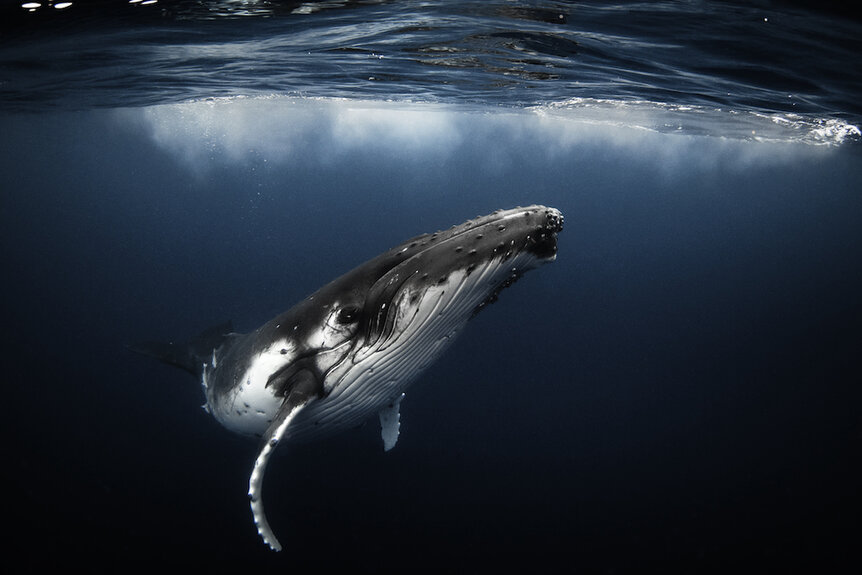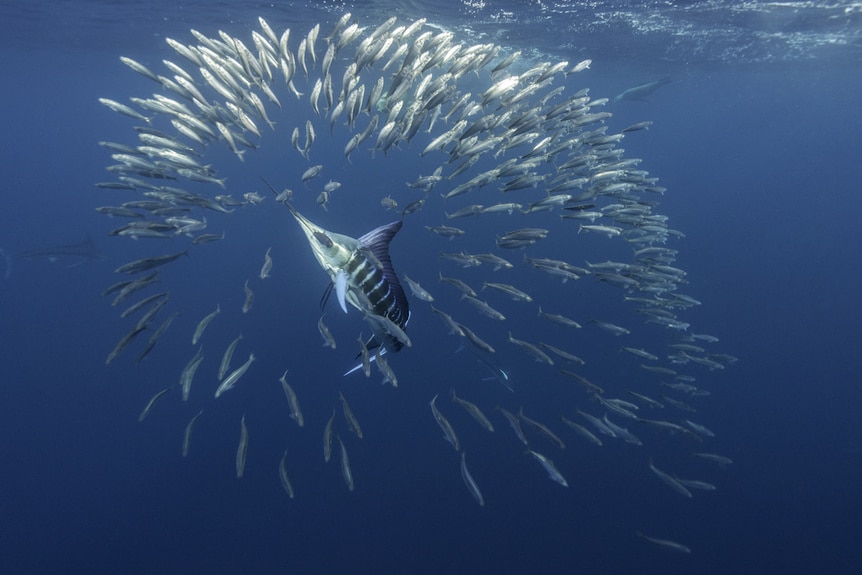How Animals Communicate Underwater: The Science Behind Aquaman
Underwater creatures talk to each other pretty much any way they can.

DC’s 2018 superhero flick Aquaman tells the story of the titular king of Atlantis as he finds his place straddling two seemingly disparate worlds. Jason Momoa plays Arthur Curry, half-human, half-Atlantean, and reluctant hero of the seas. When he’s not busy ruling the underwater kingdom of Atlantis, Aquaman is a member of the Justice League, a crime fighting alliance of heroes committed to protecting Earth from threats great and small.
Curry’s half-Atlantean heritage grants him a number of superhuman abilities including super strength, faster healing, and enhanced senses, and those are just his everyday powers. In his natural oceanic environment, Aquaman can breathe underwater, manipulate water with his mind, and communicate with aquatic animals.
On the page and screen, Aquaman’s ability to commune with the fishes has evolved significantly throughout the character’s history. Various explanations have been given for the source and limitations of his ability, but we know this: Aquaman uses a telepathic link to connect with oceanic life, mind to mind. That probably means that the level of communication is limited based on the organism involved. Conversations with a marine worm might be less stimulating than those with a blue whale, for instance. Come to think of it, can one even create a telepathic link with something like a jelly or a sea cucumber?
Make fun of Aquaman all you want, but having a built-in universal oceanic translator is super impressive because underwater animals communicate in all kinds of ways.
For More on Animal Communication:
Gorillas are Inventing New Words for Communicating with Humans
Hippos Have Vocal Caller ID and Don’t Like Unknown Numbers
To Communicate, Most Birds Sing, But Woodpeckers Play the Drums
How Whales, Fish, and Other Aquatic Animals Talk
The ruling champions of water talk are the cetaceans (whales and dolphins), with their clicks, chirps, and songs. They are often social, traveling in groups and communicating with one another across huge distances. Dolphins have been found to use names, individualized vocal calls that correspond to an individual’s identity. They’re basically swimming around down there clicking, “Hi, I’m Jeff” to one another.
Whales use a combination of clicks, whistles, and pulses to navigate the world and gossip with their friends. Clicks are mostly used for navigation and mapping surroundings. You can think of it like a version of sonar or echolocation, mostly used for finding your feet, not for talking to your neighbors. However, researchers have observed whales using clicks in social settings, suggesting they may have some communicative purpose. Or maybe they’re just using clicks to look at each other’s faces.
Most in-person communication among whales happens through a combination of whistles and pulses, short sounds that sound like squeaks or screams. Despite our inability to crack the code, dolphin and whale communication appears to be complex. Different groups even have their own dialects or slang to help distinguish them from others.
Fishes also communicate with one another in various ways including with sound. In 2022, a meta-analysis of existing audio recordings confirmed that most ray-finned fishes make at least one kind of sound. Instead of using vocal cords, they produce sound in the water by grinding their teeth together, moving rapidly, or contracting certain muscles. When researchers matched up sounds with actions, they found that fish mostly talk about eating and mating.
Acoustic communication might be the form of talking we’re most familiar with but it’s far from the only one. In addition to making noise, some fish communicate using color. Researchers studying striped marlin, one of the most efficient hunters in the water, found that they talk to each other constantly by flashing messages on their skin. Striped marlin hunt in groups, working together to corral schools of fish and taking turns darting in for a bite. And they coordinate their attacks with skin messages.
“We documented for the first time rapid color change in a group-hunting predator, the striped marlin, as groups of marlin hunted schools of sardines. We found that the attacking marlin 'lit up' and became much brighter than its groupmates as it made its attack before rapidly returning to its 'non-bright' coloration after its attack ended,” said study author Alicia Burns, in a statement.
As marlin moved in for the attack, their stripes got considerably brighter – bright enough to notice from a drone flying overhead – then dulled again as the fish pulled back. Researchers suggested it’s a way for collaborative predators to signal their intention to attack during a hunt.
In deeper waters, light becomes one of the dominating forms of communication. In the deep oceans, bioluminescence (the ability to create light through biological chemical reactions) is such an effective means of communication that nearly 90% of deep-water organisms use it.
Angler fish use glowing lures to attract prey, deep sea squid shoot glowing ink into the water to confuse predators, and bottom dwelling sea critters light tiny beacons to attract mates. Whether they’re saying “Get away from me!” or “Hey, come over here, why don’t you?”, they’re saying it with light.
The exact nature of Aquaman’s telepathic fish-talking abilities remains something of a mystery, but it’s all the more impressive because it has to handle so many different types of communication.






























